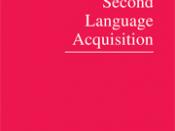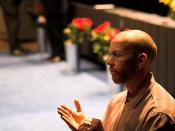LANGUAGE ACQUISTIION AND DEAFNESS
Assignment 1
INTRODUCTION
The first 0 - 4 years are the most important years of the learning process of a child's life. It is generally expressed that a child's brain can perform like a sponge in early education, and that it can soak up a wealth of information which is retained for most of its life. Much of our knowledge could be described as being acquired in a mechanical or programmed sort of way during these early years, whereby a child learns to crawl, sit, stand, walk or talk without being shown or forced to do so. However, with regard to language acquisition, according to the 'Behaviourist' Perception (B.F. Skinner) children learn through training and start from scratch. This theory bases its beliefs on everything being determined through the environment, whereby "'conditioning' that is through imitation" Singleton, D (1989:122) and habit development forms the basis of language acquisition.
On the other hand the 'Nativist' approach (N. Chomsky) contradicts this line of thought. This theory argues that there is a 'poverty of stimulus' in earliest environmental existence and that the child is born with an innate biological language faculty which steers and forms language acquisition, and that humans are equipped with a language acquisition device (LAD). Singleton (1989). The "argument here is age related having to do with the early emergence of language in the young child". Singleton (1989:188). While each writer has his particular view on language acquisition, there is perhaps not enough evidence in either to fully support either theory on a stand-alone basis (course work 30.09.09).
Both vocal and sign language acquisition go through different stages, during which communication are developed. This can be relayed in the form of body, spoken or signed language and is acquired gradually. It...


